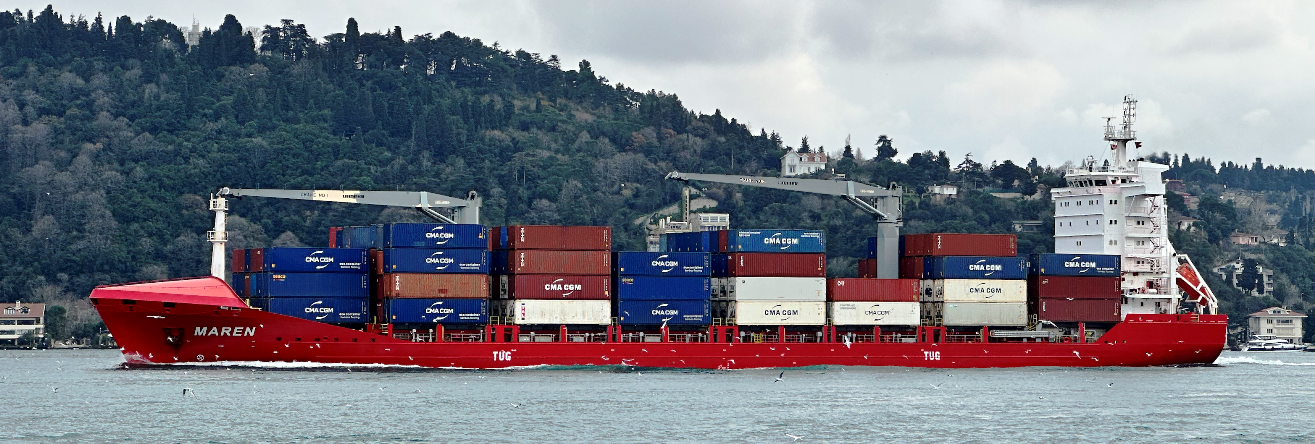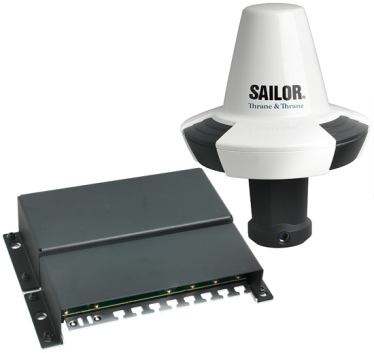
Inmarsat-C is a two-way, packet data service which operates between mobile earth stations (MES) and land earth stations (LES).Inmarsat-C uses small omni-directional antenna.
The service is approved for use under the Global Maritime Distress and Safety System (GMDSS), meets the requirements for Ship Security Alert Systems (SSAS) defined by the International Maritime Organization (IMO).
Used for distress and safety communications as well as fleet tracking, Inmarsat C and Mini C enable you to send & receive data messages of up to 32 kilobytes. The service works with a store-and-forward method which enables interface with data network transfer including; e-mail; SMS; telex; remote monitoring; tracking (position reporting); chart and weather updates; maritime safety information (MSI); maritime security; GMDSS; and SafetyNET and FleetNET services; two-way messaging; data reporting and polling; Safety/Emergency alerting. Voice communication is not possible with Inmarsat-C.
Inmarsat Mini C terminals are the smallest models, with some incorporating the antenna and transceiver in the same above deck unit and, depending on the model, supporting the same communication services as Inmarsat C terminals.

The equipment comprises a small omnidirectional antenna, compact transceiver (transmitter and receiver), messaging unit and, if GMDSS-compliant or with a distress function, a dedicated distress button to activate an alert. Inmarsat Mini C terminals are the smallest models, with some incorporating the antenna and transceiver in the same above deck unit and, depending on the model, supporting the same communication services as Inmarsat C terminals.
All modern Inmarsat C and Mini C terminals have an integrated Global Navigational Satellite Services (GNSS) receiver for an automatic position update on the terminal which is used for distress alerting (ship’s position, course and speed), ship’s position data reporting applications and selective reception of EGC SafetyNET messages.
Distress alerting is a mandatory service on SOLAS compliant maritime Inmarsat C and Mini C terminals and on some non-SOLAS models too.
When a distress (SOS) button is pressed, a short preformatted data packet is transmitted with priority from the terminal to an addressed Land Earth Station (LES) that automatically routes it to an associated Maritime Rescue Coordination Centre (MRCC). The distress alert contains information on the terminal’s ID, addressed LES, date/time of alert, ship’s position, course, speed, time of last position update, nature of distress, flag and speed update.
When a distress alert is received by an MRCC, it will establish communication with the ship to organise search and rescue (SAR) services that may be required.
Inmarsat C and Mini C terminals can receive broadcast messages known as Enhanced Group Calls (EGC). EGC is the system for broadcasting messages via Inmarsat C and it supports two services: SafetyNET and FleetNET.
SafetyNET is the international service for the broadcast and automatic reception of maritime safety information (MSI) and search and rescue (SAR) related information via the Inmarsat EGC system. SafetyNET receiving capability is part of the mandatory equipment required to be carried by certain ships in accordance with the provisions of the International Convention for the Safety of Life at Sea (SOLAS) 1974, as amended. It is used by, but not limited to, NAVAREA co-ordinators for NAVAREA warnings and other urgent safety-related information; national coordinators for coastal warnings and other urgent safety-related information; METAREA issuing services for meteorological warnings and forecasts; and Maritime Rescue Coordination Centres for shore-to-ship distress alerts, SAR information and other urgent safety-related information.
FleetNET is a commercial service and allows information to be sent to a virtually unlimited number of predesignated mobile terminals simultaneously, irrespective of their position. To receive EGC FleetNET messages, ships should have an Enhanced Data ID (ENID) downloaded into the terminal by a FleetNET service provider using a poll command. The service may be used by shipping companies, organisations distributing news, commercial weather providers, etc.
Reliable access to critical information: Inmarsat-C ensures dependable access to essential information, including position reporting, data monitoring, messaging, and distress calling. Users can rely on this system for accurate and timely communication.
Safety compliance at sea: Inmarsat-C is fully compliant with the Global Maritime Distress & Safety System (GMDSS), which is a set of international regulations and protocols designed to enhance safety and emergency response capabilities. By adhering to GMDSS standards, the system contributes to the overall safety of maritime operations.
Convenient billing: Inmarsat-C offers volume-based invoicing, making it convenient for users to manage their billing based on their usage. This approach allows for greater flexibility and cost control.
Compact equipment: The equipment required for Inmarsat-C is designed to be lightweight and compact. This feature ensures that it can be easily installed and does not take up excessive space on board ships or other maritime vessels.
Cost efficiency: Inmarsat-C is compatible with an IP Front End Processor (IP-FEP), which enhances cost efficiency. Additionally, it provides direct access to Inmarsat's Land Earth Station, further optimizing operational costs.